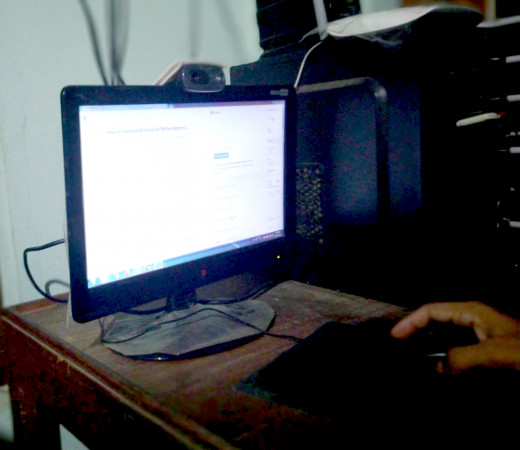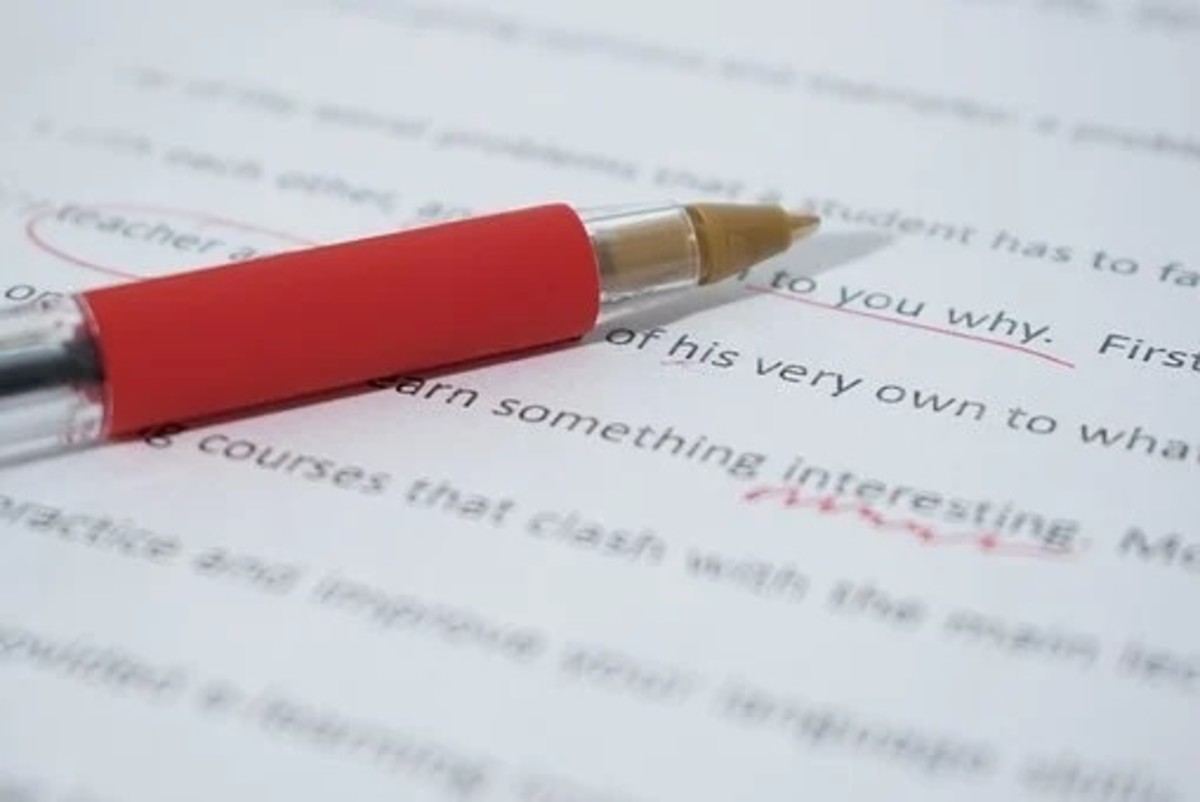How to Improve Articles for Better Appreciation From Editors and Readers
Article Improvement
While writing articles, writers having good inspiration from peers, with enthusiasm, quickly develop fine flowing contents. Due to time limits and hurry in publishing, writers spend less time refining the articles. Sometimes during quick writing, writers may miss important guidelines. Within an hour or two an article for website content or blog post is demanded from them. It is also encouraged to do so, for greater productivity among the writers working in a team or while working for time-bound magazines.
If the editors turn down your article with just a note, informing that the content is too dull to the reader and is not fit for the publication, you might feel desperate. In fact, you should not feel desperate at all, as you’ve got a chance now to improve the existing article. Do not listen to those who may be a reader or your friend or family member for their advice. They may tell you to relax and change your platform.

Myths and Reality
Myths
- Good articles can be written by devoting sufficient time and only when the author gets a good mood for writing.
- The first article of a great author will be perfect.
- It is not possible to write 2 to 3 good articles in a day.
Reality
- Authors cannot survive if they wait for the good times for writing.
- Most of the authors have improved from mean levels to the top quality.
- Once after getting sufficient experience, you will become an author, who can write 2 to 3 or more articles daily.
- There is always a process of write – read – rewrite – make it perfect – publish sequence involved in the industry in common.
So, there is no worry for being rejected at the first instance. Improve and submit again, without much delay. Procrastination and relaxing at half-way are your enemies.

Step-by-Step Procedure for Improving the Articles
To improve the article, you need to perform only these simple ten-steps and get published.
1. Read again to identify major mistakes
Hurried writing concentrating on content body text development is naturally prone to some errors. A thorough reading will help to identify and correct such mistakes. Reader’s first sight will mostly go to the titles, subtitles, photos and the captions. Whereas, for the writers, the concentration will go mostly to the descriptions within the body text of the article.
As mentioned in the guidelines, titles should be in "Title Case" format with each word with the first letter in capitals and for the sub-titles, only the first letter needs to be in capital letter.
Instead of a very short title like this 'ISLAND HOLIDAY PLAN' or a very long one like this 'You can enjoy your summer holidays with family in Andaman islands' it is good to have: 'Enjoyable Family Holiday at the Andaman Islands'.
This follows the APA guidelines regarding the article title style.
Read the article text for errors, identify and correct inadvertent typographic errors, grammatical errors, spelling mistakes are all bound to happen. These are also quite natural mistakes, happening during the preparation of articles due to physical as well as auto-correction errors during word processing. Please take good care while correcting them by refining the proper flow and ease of understanding.
Don’t change the text style at different places and don’t make bold formatting within the paragraph to specifically emphasize something. Let the reader grasp those based on your writing style.
The present generation of writing style is by social media, which will not be in the required formal English. People are used for writing incomplete sentences, without capitalizing nouns, no punctuation and grammar.
2. Analyse the title with the content
See whether what is told in the title is properly described in the content. The title will be the face of the entire article. It is coming under the keyword search through search engines.
3. Give some creative touch
It is essential to retain the reader on the article until the last word. Always write with the reader’s perspective in a digestible style. Relating the articles to real-life situations and the real stories and inclusion of conversations, wherever possible will make the story interesting. Moments of personal experience are always connecting with readers.
Simplify hard to crack sentences which cannot be understood by the common man with a single-time reading. Similarly, avoid packing the sentences with word jargons which many of the readers need a dictionary to understand. Do not make the sentences wordy. Similarly, avoid creating too many paragraphs of which some paragraphs fail to convey any ideas.
4. Starting and conclusion
See whether the introduction draws the reader to the article and conclusion sums up well. Well begun articles retain the reader to go through further into the article. After completing the content, close the article properly giving a clear message from the author to the reader creating an impact.
5. Summarize for attraction
If the summary is at the top of the article, it occupies the role of meta text. So, search engines draw them for indexing. To be clear, concise and precise with tags and leads to the article content make a perfect summary. It is important to spend some time on this with careful texting for the success of the article, next only to the title.

Value Addition to the Articles
6. Images and callouts
Take good photographs to complement the article, which creatively connects with suitable impact for the reader about the article. It is said that an image is worth a thousand words. Placing attractive photos in between the text helps to continue from one section to the next and direct to read more. Long text content without callout texts also will be boring.
Personal photos and those having promotional displays might be considered as spamming elements. Therefore, images need to be carefully selected which can improve the value of the article.
7. Referral marketing
Add product/ book widgets only if it can be mentioned as a part of the article’s content. Including third party marketing other than the specified referral agency such as Amazon Inc., will be considered as spam.
8. Make the article long
If the article is too short, make it longer (1000 to 1250 words, excluding summary). In a normal case, bringing a topic to highlight, describe and draw to a conclusion, it takes some amount of elaboration and illustrations. Ultimately, the purpose of the article is to convince something.
9. Update regularly
Keep regularly updating the article information, so that it won't become outdated. Outdated contents not only become junk and non-contemporary at the same time de-value the publisher and author.
10. Show the power of digital technology
Show the difference between the conventional media and online digital hub by inserting your own video on the subject. Run a quiz or do a poll. In case of a travelogue use widgets related to it or for a recipe, nutrition and cooking related widget capsules. It is the actual power of digital writopreneurship characteristic which will take the reader through altogether a different experience.
Follow the Guidelines
Established sites have their own manual of style for formatting the articles. For example, Hubpages has the ‘Hubpages Writing Style Guide’. Usually, strict adherence is anticipated from such established sites to maintain the quality and uniformity of their articles. However, for a writer to have in his collection the ‘Chicago Manual of Style’ is an important publication for guiding the authors. It is adopted by many traditional publications as such.
In the electronic platforms of preset forms, we have not much flexibility to alter the style too much as these are not having options to alter. Furthermore, know the preferences set by the platform well, so that your article and their purposes match.
Wish you all the best!
Hope that the readers will get an overall picture regarding how to improve their articles if they miss something and face warnings again and again without understanding what to do and whom to contact. Some authors leave the scene and quit the task and go in search of a better or simpler one.
This article is accurate and true to the best of the author’s knowledge. Content is for informational or entertainment purposes only and does not substitute for personal counsel or professional advice in business, financial, legal, or technical matters.
© 2019 Halemane Muralikrishna






